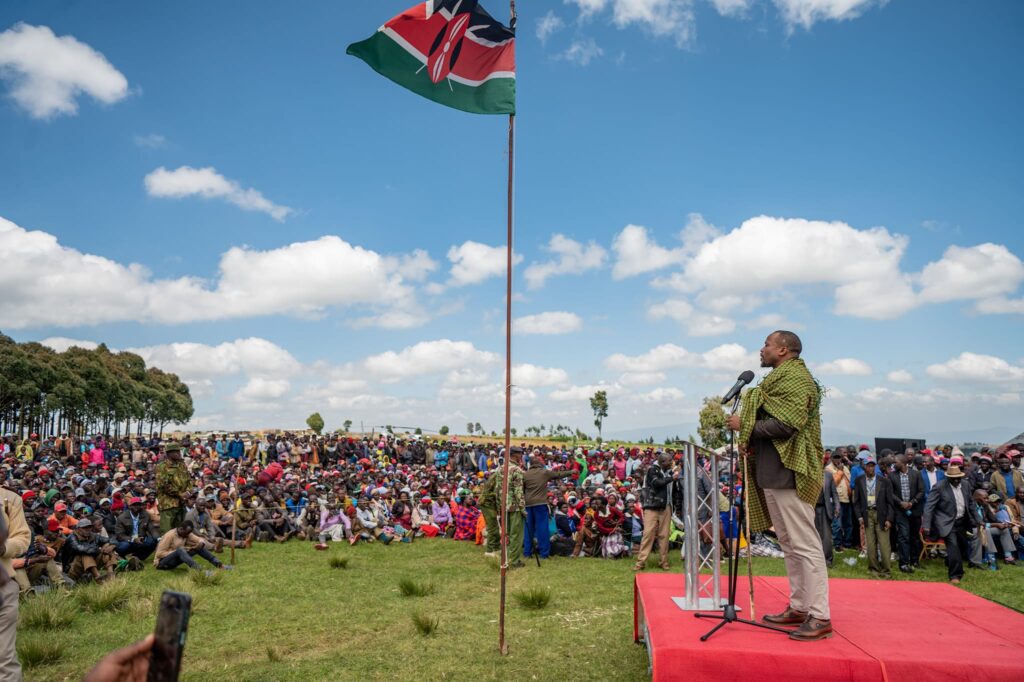By Catherine Muindi
Mau Forest, Kenya’s largest indigenous forest and a crucial water catchment, is under threat.
Spanning over 400,000 hectares, it feeds rivers flowing into Lake Victoria, supports agriculture, and sustains biodiversity. However, illegal logging, agricultural encroachment, and settlements have led to significant deforestation—over 40% of the forest has been lost, impacting water security, biodiversity, and climate stability. The question remains: Are we doing enough to halt this destruction?
Recognizing the urgency, the Kenyan government has launched restoration efforts, including the Mau Forest Restoration Plan (2009) to rehabilitate degraded areas and halt illegal activities. Last week, the State Department for Lands and Physical Planning, alongside the State Department for Forestry, convened stakeholders in Nakuru County to oversee the implementation of a court ruling on Mau Forest land boundaries. The discussion focused on the beaconing process in Mau East, a crucial step for titling and sustainable land management.

Lands PS Nixon Korir reaffirmed the government’s commitment to a transparent boundary demarcation process. “We are here to implement the court’s decision and ensure beaconing follows the gazetted 2001 map. Within 30 days, beacons for Mau East will be placed. I urge all stakeholders to support my surveyors for a smooth exercise,” he stated.
The Ogiek community welcomed the beaconing initiative. “For years, we lived in uncertainty, fearing displacement. With clear boundaries, we now have clarity and a future,” said Carol Osasi, a community elder. Another resident, Josephat Samoei, added, “This initiative secures our land and encourages reforestation.”
Another key effort is the 10 Billion Trees Campaign launched in 2020, aiming to restore degraded lands by planting 10 billion trees by 2030. Mau Forest is a focal point of this campaign, aligning with global land restoration goals under the Global Land Initiative (GLI). Collaborations with organizations like WWF and Nature Kenya provide funding and technical expertise for large-scale reforestation efforts.
Despite these initiatives, more action is needed. Forest restoration requires sustained commitment, policy reforms, and multi-sector collaboration. Laws must be strengthened to prevent illegal land acquisitions, while public-private partnerships can mobilize resources for conservation. Technology, including Geographic Information Systems (GIS) and drones, can enhance monitoring and transparency.
Restoring Mau Forest is a collective responsibility. Planting trees, supporting conservation efforts, and raising awareness through media and community forums are vital steps. While progress is underway, the journey continues. Mau Forest is a legacy for future generations—let’s ensure it thrives for decades to come.
The Kenyan government, together with local and international stakeholders, must strengthen policies and increase funding for restoration projects. Enhanced community participation is crucial in fostering long-term conservation success. Additionally, strict enforcement against illegal logging and encroachment is essential to maintain progress.
The impact of deforestation extends beyond Kenya, affecting water systems that sustain millions across East Africa. Countries sharing water sources from Mau Forest must collaborate in sustainable management practices, reinforcing transboundary conservation efforts.
Educating communities on sustainable farming, responsible land use, and the benefits of afforestation is another critical aspect of restoration. Schools and local organizations can play a pivotal role in instilling a culture of conservation in younger generations.
The road to saving Mau Forest requires collective commitment and continuous action. By working together, implementing sustainable policies, and fostering community-driven conservation, we can restore this vital ecosystem. The responsibility lies with all of us—to act now and secure Mau Forest for the prosperity of future generations.
